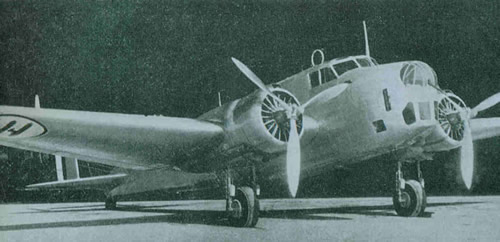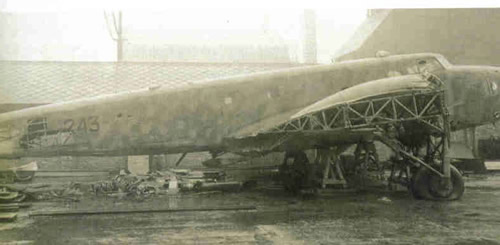|
|
|

Fiat B.R.20 Cicogna
By: Raul Colon
E-mail: rcolonfrias@yahoo.com
PO Box 29754
Rio Piedras, Puerto Rico 00929

On February 10th,
1936, the massive Italian corporation, Fiat; flew for the first time
its most advance bomber aircraft design: the Cicogna. The Cicogna
followed a long line of designs by brilliant Italian engineer
Celestino Rosatelli. The idea for a new advance bomber for the Italian
Air Force (IAF), first germinated at the end of the Great War.
Profoundly market by the bombing of London by the Germanís Gotha
bomber, the Italians knew that in any new conflict the projection of
power, demonstrated by the bomber, and could tip the scale of battle
in their favor. Rosatelli was selected to design the new aircraft
because of his impeccable track record delivering winning concepts to
the IAF Such was the regards the Italian high command placed on
Rosatelli that the Italian Air Force gave him his own designation mark
for his new designs. The Bombardamento Rosatelli or B.R. was the
designating letter for any new bomber. Work on the Cicogna commenced
in late 1934 and culminated with the B.R.20 maiden flight on February
1936. A remarkable short time from design to production. Even more
impressive was the fact that the Cicogna equipped four combat units of
the AL by the end of 1936.
The B.R.20 was one of the first all-metal bomber designs adopted by
the Italians. The bomber was powered by two 1000hp Fiat A80 engines.
They gave the B.R.20 a top operating speed of 273mph. Operational
range was 1,709ml. The B.R.20 was able to climb at 19,690ft in twenty
five minutes, and possessed a top mission ceiling of 26,250ft. From
the beginning, the Cicogna was design to carry the most advance
weapons systems of the times; this resulted in an expended take-off
weigh which was set at 22,758lb. The length of the fuselage was 54ft
8in with a height of 15ft 7in. The wing area was established at
796.5sq ft with the wingspan at 70ft 8in. The plane defensive armament
consisted of three 0.5in machine guns. One located in the nose, and
one in each turret (dorsal and ventral).
The B.R.20 was first use in combat by Italyís Aviazione Legionaria
during the Spanish Civil War. The type flew alongside Germanyís
vaunted Heinkel 111s in close support of Nationalist ground troops. It
proved that it can hold its own during major combat operations. The
new Nationalist government was so impressed with the Cicogna that it
purchases twenty five units for its infant air force. The B.R.20 was
also exported to Venezuela and Argentina. The Japanese Empire bought
eighty five units for its combat operation in mainland China. But, as
the clouds of war engulfed Europe, it was becoming increasingly clear
that the B.R.20 was fast becoming obsolete. An upgrade package was
developed to the bomber. A new central streamline fuselage, along with
reinforce amour plating was installed on the B.R.20 air frame. The new
model, designated B.R.20M was to be mass produce by Fiat. In fact, of
the 602 Cicogna produced, around three hundred and five were of the
M-type.

The Cicogna was well
recognized by the British due to its extensive service in the North
Africa campaigns. But the role which cemented the legacy of the B.R.20
in Italy was its raid against the British Isles. On the morning on
November 1st, 1940; and mostly because the IAF believed the propaganda
coming out of Berlin regarding the sorry state of the British Royal
Air Force (RAF); ten B.R.20 bombers, escorted by forty CR42 fighters,
departed occupy France en route to attack the British commercial docks
at Harwich. The sortie was met by a small concentration of RAF
fighters. They proceeded to destroy the complete formation before the
bombers could reach their targets. The losses were so appalled, that
the IAF cancel further bombing operations in England within days of
the raid. After the war, the surviving B.R.20 was use mainly as target
tug planes. A few samples remain to this day in possession of private
owners. No sample is believed to be air worthy anymore.
|
|
|
